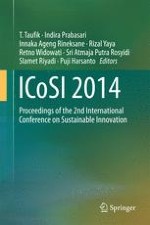2017 | OriginalPaper | Buchkapitel
Selection of Soybean Lines (Glycine max) Tolerant to Drought
verfasst von : Apri Sulistyo, Suhartina, Novita Nugrahaeni, Purwantoro
Erschienen in: ICoSI 2014
Verlag: Springer Singapore
Aktivieren Sie unsere intelligente Suche, um passende Fachinhalte oder Patente zu finden.
Wählen Sie Textabschnitte aus um mit Künstlicher Intelligenz passenden Patente zu finden. powered by
Markieren Sie Textabschnitte, um KI-gestützt weitere passende Inhalte zu finden. powered by
